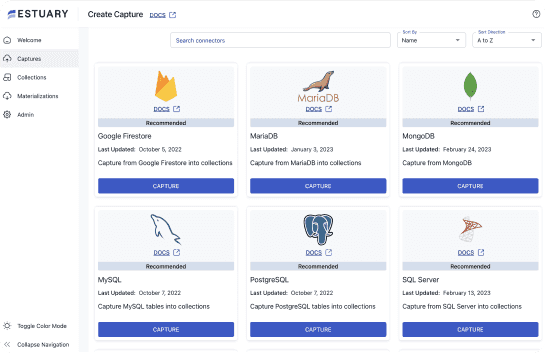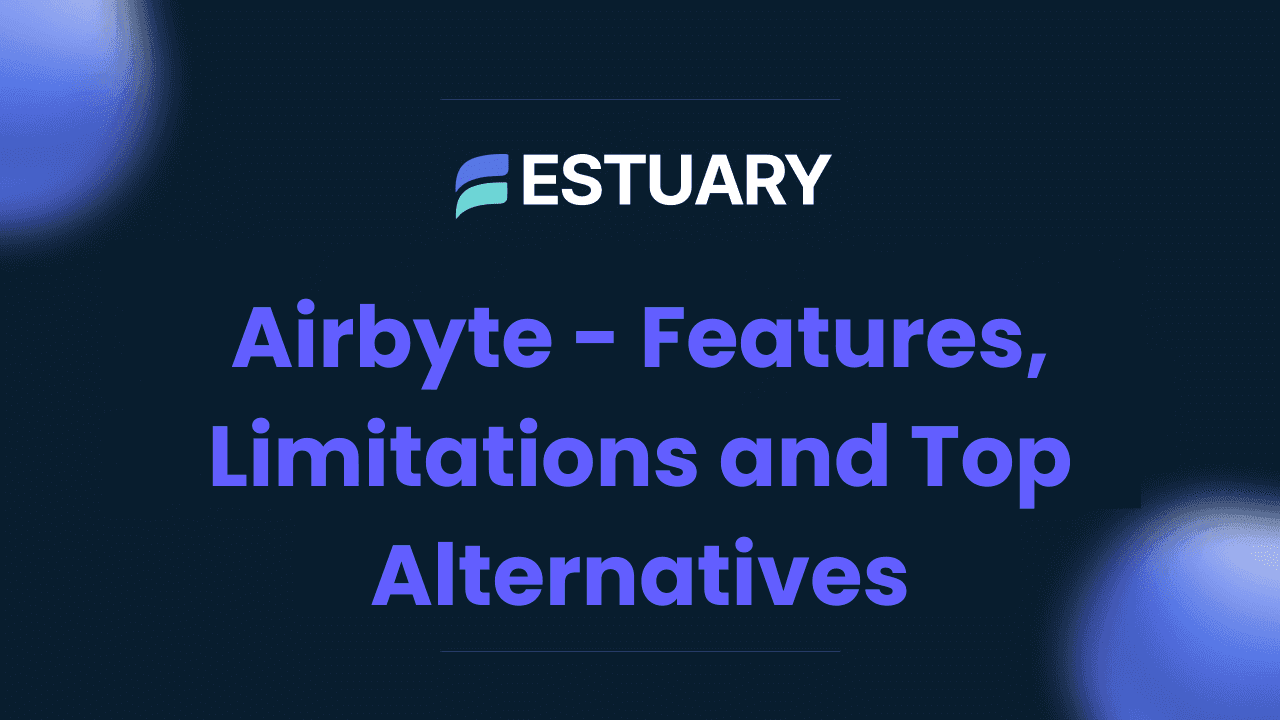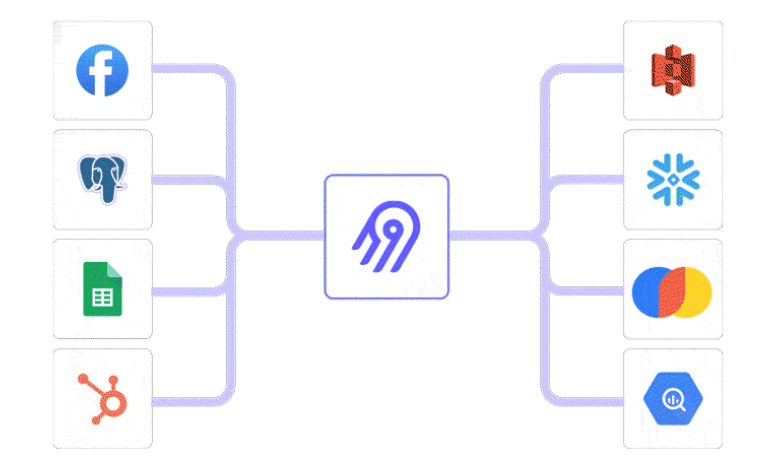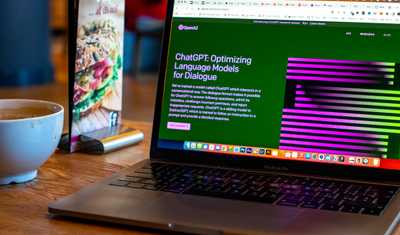
Understanding Airbyte: The Basics
Airbyte is an open-source ELT platform that helps teams move data from various sources into cloud data warehouses and other destinations. Designed for flexibility, it offers over 350 connectors and allows users to create custom integrations. While Airbyte’s community-driven development and modular architecture make it popular, its batch-based pipelines and scalability issues can present limitations.
This Airbyte review guide covers how it works, what it’s used for, its pricing and performance, and how it compares to top alternatives like Estuary.
40% Lower Snowflake Costs: Why Headset Chose Estuary Over Airbyte - Explore the Case Study
What is Airbyte Used For?
Airbyte serves as an Extract-Load-Transform (ELT) tool that moves data from various sources (like SaaS platforms and databases) to analytical destinations such as cloud data warehouses.
Key Use Cases:
- Data Replication: Sync SaaS and database data to analytical environments like Snowflake, BigQuery, or Redshift.
- Batch CDC: No log-based change data capture (CDC) support.
- Open-source Connectors: Extend or create custom integrations.
- Cloud ELT Pipelines: Use Airbyte Cloud for a managed experience with dbt Cloud-based transformations.
The Singer Legacy: Stitch, Meltano, and Airbyte
Airbyte isn’t the only modern tool built on open-source ELT ideas. It shares roots with other projects like Stitch and Meltano:
- Stitch: Originally created the Singer open-source connector framework and was later acquired by Talend (now owned by Qlik). Since then, Singer’s development has stagnated, leaving a fragmented ecosystem.
- Meltano: Built on top of Singer connectors, Meltano targets engineers wanting end-to-end pipelines with CI/CD integration and orchestration.
- Airbyte: Started with Singer compatibility but soon moved to its own connector protocol while retaining backward compatibility. Despite architectural changes, it still operates as a batch-first system—a key limitation as data integration moves real-time.
How Airbyte Works
Airbyte’s architecture follows a modular design where each data operation—extract, load, transform—is powered by Dockerized workers. In Airbyte Cloud, these workers are managed behind the scenes.
The ELT flow looks like this:
- Extract: Source connector reads data (often via batch or CDC).
- Load: Data is written to the destination in intervals (not real-time).
- Transform: dbt Cloud handles transformations within the data warehouse.
This approach simplifies setup but introduces latency and reliability constraints in high-throughput environments.
Airbyte Features & Limitations
Latency
Airbyte operates in 5-minute+ intervals, even for CDC pipelines. While it offers Debezium-based connectors for most databases and supports Kafka/Kinesis sources, these pipelines are still batch-loaded. This architecture means:
- Latency accumulates during extract, load, and transform.
- Pipelines halt without staging or storage if a source or destination fails.
- CDC can put extra load on source databases.
Note: The new PostgreSQL CDC connector shows promise, with throughput of up to 9MB/sec—comparable to or faster than Fivetran’s non-HVR option—but this only translates to ~0.5TB/day and is still batch-based.
Reliability
Airbyte pipelines don’t provide exactly-once guarantees (except for the new Postgres connector). Most CDC flows are at-least-once, requiring deduplication in the destination. Workers are single-threaded, meaning any overload leads to reliability issues:
- No automatic scale-out
- No staging or failover
- If a pipeline fails, it must re-extract data
Airbyte offers incremental/dedup modes—but they must be manually configured.
Scalability
Airbyte Cloud’s scalability is a known bottleneck. Each task runs on a single worker:
- Memory limits constrain ingestion (10,000 rows held in memory = GBs of RAM)
- Only ~25% of an instance’s RAM is allocated to the worker container
- No scale-out capabilities
This architecture isn’t ideal for high-volume pipelines, real-time needs, or operational analytics.
Transformations & DataOps
Airbyte supports dbt Cloud (not dbt Core), making it somewhat more limited compared to tools like Fivetran. More importantly:
- No support for transformations outside the data warehouse
- No “as code” pipeline management for full DataOps
- Schema changes and testing require manual oversight
Airbyte Pricing
Airbyte Cloud charges:
- $10/GB for database data
- $15 per million rows for API/custom sources
You’ll also pay for backfills and extra usage, though volume-based discounts are available. Despite its open-source roots, Airbyte Cloud’s pricing can become steep with scale.
In contrast, Estuary offers usage-based pricing at $0.50/GB + $0.14/hour, making it significantly more cost-effective for most real-time use cases.
Airbyte vs Estuary: Real-Time Alternative Breakdown
| Feature | Airbyte | Estuary |
| Real-time latency | ❌ (5+ min) | ✅ (<100ms) |
| CDC support | batch-based | real-time, exactly-once |
| Storage / staging | No | Yes (streaming storage) |
| Deduplication | Manual | Automatic |
| Multi-destination | No | Yes |
| Backfill & time travel | No | Yes |
| Self-hosting | Yes | Yes |
| Pricing | $10/GB | $0.50/GB + $0.14/hr |
Estuary enables true streaming data pipelines with built-in storage, flexible transformation options, and support for multiple destinations—all within a single pipeline. With exactly-once semantics, time travel, and backfill, Estuary is built for teams needing low-latency, fault-tolerant pipelines.
Read detailed comparison: Estuary Flow vs Airbyte
Airbyte Alternatives
Besides Estuary, other Airbyte alternatives include:
- Fivetran: Fully managed, but expensive and also batch-based. Minimal flexibility and high MAR-based costs.
- Stitch: Lightweight ELT tool with a declining ecosystem. Suitable for small-scale use cases.
- Meltano: Great for dev teams who want pipelines-as-code, orchestration, and open-source control—but requires more engineering investment.
Conclusion: Is Airbyte Right for You?
Airbyte is a compelling choice for teams prioritizing open-source extensibility and cost control—especially in small to medium batch-based pipelines. However, limitations in latency, reliability, and scalability mean it may fall short for use cases involving operational analytics, ML pipelines, or anything real-time.
For companies looking to unlock sub-second latency, predictable pricing, and multi-destination real-time integration, Estuary offers a stronger foundation—especially as your data footprint grows.
FAQs
1. Is Airbyte an ETL or ELT tool?
Airbyte is an ELT tool that moves data from source to destination and supports transformations via dbt Cloud.
2. Does Airbyte support real-time data sync?
No. Even for CDC, Airbyte operates on batch intervals of 5+ minutes and lacks staging or failover storage.
3. What’s the difference between Airbyte and Estuary?
Estuary supports real-time, exactly-once pipelines with built-in backfill, staging, and multi-destination flexibility. Airbyte is batch-based and less scalable at higher volumes.
4. Does Airbyte offer a free plan?
Airbyte offers a free tier in Airbyte Cloud and is open source, but costs can grow quickly with scale in Cloud deployments.
5. What is the best alternative to Airbyte?
Estuary is the best Airbyte alternative for teams that need real-time data pipelines, exactly-once delivery guarantees, and predictable, usage-based pricing. Unlike Airbyte's batch-based architecture, Estuary processes data in sub-second latency and supports multiple destinations, built-in backfills, and time travel — all without the need for custom deduplication or manual pipeline tuning.

About the author
Dani is a data professional with a rich background in data engineering and real-time data platforms. At Estuary, Daniel focuses on promoting cutting-edge streaming solutions, helping to bridge the gap between technical innovation and developer adoption. With deep expertise in cloud-native and streaming technologies, Dani has successfully supported startups and enterprises in building robust data solutions.












